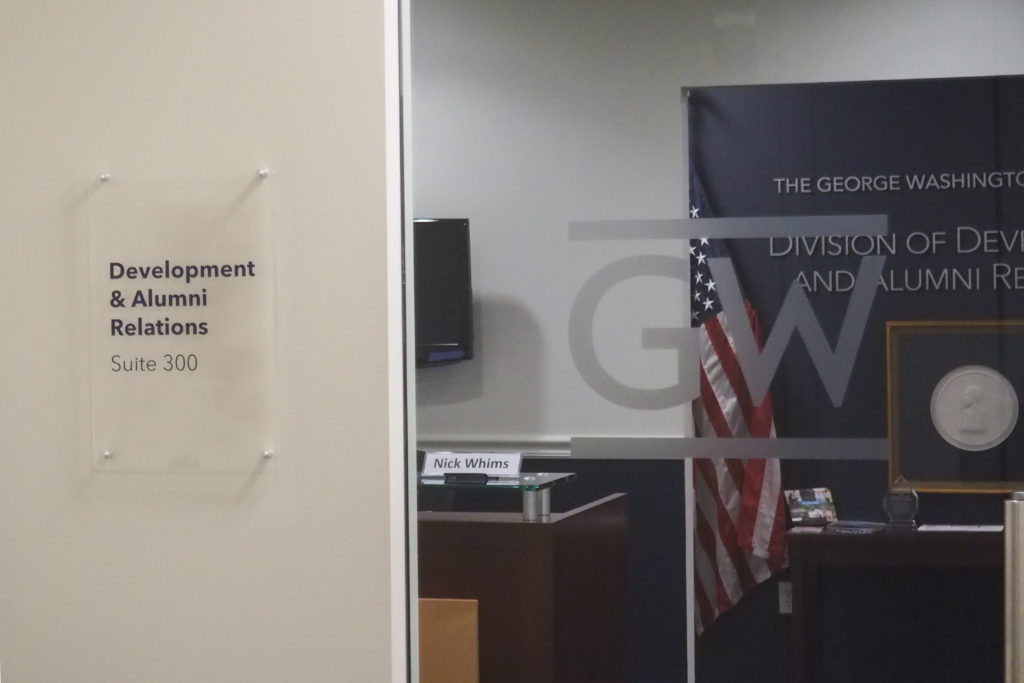Updated: March 5, 2020 at 9:36 a.m.
Officials are extending a planned gift challenge at least through the end of the month.
The challenge – through which the University will donate $1 to a donor-designated program, up to $10,000, for every $10 the donor pledges to donate later in life – will now run until at least the end of March. The program was slated to end on either December 31, 2019, or when the matching funds were depleted, according to the program’s website.
The program, which officials revisited last February, has a $1 million matching pool – more than double the $366,000 available when the University held its first legacy challenge in 2017, according to the challenge’s website. The funds are provided by donations from the estates of alumni Joan Colbert and Douglas Mitchell.
University spokeswoman Crystal Nosal said officials will provide more details on the challenge’s results in the spring.
“Development and Alumni Relations is allowing additional time for donors who were asked for commitments during the current Legacy Challenge to complete their documentation,” she said in an email.
Nosal declined to say how much money was raised as part of the challenge and whether the $1 million in matching funds was depleted. She also declined to say whether there were any specific programs or departments that have attracted a significant number of donations.
She declined to say if officials are planning a similar matching campaign in the future.
“After an initiative like this we analyze the results, speak with donors about their experience and evaluate the potential for future programs of this type,” Nosal said.
Donors can plan gifts to the University through several different means, like naming GW a beneficiary in life insurance policies, leaving cash or property to GW in their wills or contributing a portion of their retirement savings accounts, according to GW’s planned giving website.
Gift planning experts said officials may have decided to extend the matching program because of its success in garnering donations and to further raise awareness of planned gifts as an option for contributing to the University.
Eve Forbes, the director of gift planning at Quinnipiac University, said matching challenges may incentivize donors who have been considering a donation to the University to commit to donating during the period of the matching challenge to reap the additional benefits.
Forbes added that incentivizing planned giving requires a different approach than other types of contributions because planned gifts are more “personal” in nature and require a more “long-term” decision-making process.
“We’ll often talk about how planned gifts are sort of like you’re making the charities almost as important as your family because ordinarily, people leave their estates to their families and their close friends,” Forbes said.
John Woods, the assistant vice president of gift planning at Ohio State University, said officials can best promote planned gifts by speaking to people about the institution’s mission to overcome donors’ tendency to leave all of their estates to their families. He added that administrators sometimes extend challenges when they are successful in garnering more gifts.
“If you have funds to continue to do it, it makes sense to do it,” he said about gift-matching programs. “I think that’s probably the big reason is that they were successful with it, so they allowed it to continue to go farther.”
Jon Kraus, the director of development and gift planning at the University of Denver, said matching programs also have a secondary effect on identifying donors because anonymous donors are encouraged to come forward and designate a program to receive the matching gift.
“It’s a great way to say you know, ‘Hey, we appreciate that you want to be anonymous or we want to respect the confidentiality of your gift, but if you choose to notify us and if you choose to designate toward a particular area, you will basically be able to activate those funds sooner,’” he said.
He said his institution, like others, is seeing an increasingly large portion of fundraising totals come from planned gifts, like gifts in which the institution is made a beneficiary of a retirement plan, because of the economy and stock market are currently “volatile.”
“They still know that they’re supporting the university, they know that they’re going to have an impact,” Kraus said. “And maybe they’ll make some current gifts as well but it just makes them a lot more comfortable to know, ‘OK, I can be part of the legacy society or I can make this commitment and get enough from matches, knowing that I still have use of my assets and I don’t have to give a lot up front.'”
Jared Gans contributed reporting.





